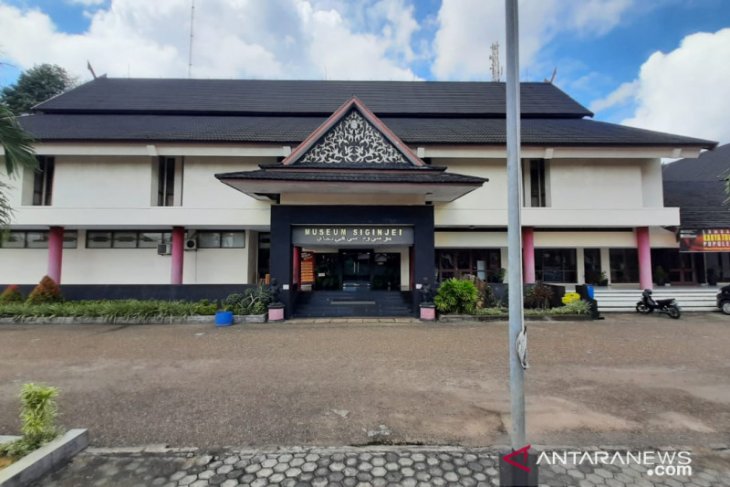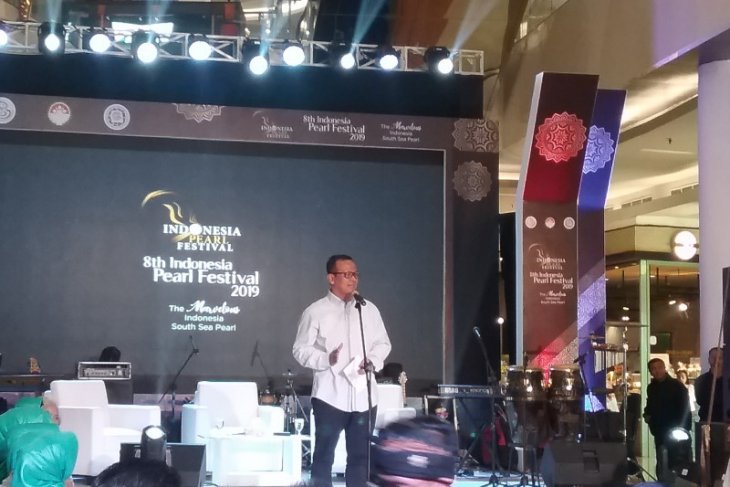Live Streaming
Program Highlight
Company Profile

Ani Hasanah
July
Minister of Research and Technology, Bambang PS Brodjonegoro, urged the Eijkman Molecular Biology Institute to improve on the results of its genome sequencing of the coronavirus which causes COVID-19 to gain an insight into its nature.
“Whole genome sequencing (WGS) [of the coronavirus] may need to be enhanced, as there are only 16 WGS that have been delivered to GISAID up until now, in a number that is further behind compared to other countries, including India and China; proportionally, we are still lagging behind,” he said at a virtual press conference on Thursday in Jakarta.
So far, Indonesia has submitted 16 whole genome sequencing (WGS) results to the the Global Initiative on Sharing All Influenza Data (GISAID). The GISAID manages global data about the coronavirus that causes COVID-19.
Of the 16 WGS, 10 were produced by the Eijkman Molecular Biology Institute and 6 by the Airlangga University.
Meanwhile, the Eijkman Institute has set a target to collect 100 WGS, which indicates the institute still has a long way to go.
The WGS is considered important in the effort to determine the characteristics of the virus circulating in Indonesia.
The WGS results will also help in developing the Red and White vaccine, so, it is hoped, that the vaccine produced will be suitable for Indonesians, as it is based on the SARS-CoV-2 virus seen in the country.
In addition to conducting whole genome sequencing, the Eijkman Institute is also testing specimens to detect COVID-19 and leading a research consortium for the manufacture and development of the Red and White vaccine.
The Eijkman Institute of Molecular Biology has also contributed to the creation of a virus transport media (VTM) that has been distributed to laboratories to store specimens from swab tests carried out to detect the novel coronavirus disease. (ANTARA)
July
Three Museums Reopen in Jambi

A museum in Jambi city
Three museums in Jambi province have reopened to public since July 6 this year, with visitors urged to practice preventive measures mandated by the health protocols for containing coronavirus spread, a local authority revealed.
The reopening of the Siginjei, Perjuangan Rakyat (People's Struggle), and Gentala Arasy museums has been approved by the Jambi Provincial Government and its COVID-19 task force, head of administrative affairs at Siginjei Museum, Muzakir, said in Jambi on Thursday.
Since then, many local residents, especially university students who are keen to collect data for their studies, have been visiting the museums. People are also visiting the museums with their kids for educational and recreational purposes, he said.
Through their collections, the museums allow visitors to observe and learn about Jambi's heritage in terms of art, history, language, local wisdom, and cultural richness, Muzakir noted.
“(A) Museum is a media for people's literacy. So, we hope they (the public) will always visit our museum. We guarantee that visiting it is secure because we are strictly enforcing the healthcare protocols," he said.
A museum worker is scanning visitors’ body temperatures before they enter the Siginjei Museum, he stated, adding hand-washing facilities have also been made available for visitors.
As of July 14, 2020, Jambi province had reported 124 confirmed COVID-19 cases and 2 deaths. The total number of patients under surveillance stood at 210, while 2,491 people were placed under monitoring in the province.
Apart from the government's continued endeavors to flatten the curve of coronavirus cases, many provincial governments have enforced transitional large-scale social distancing measures (PSBB) as they prepare for a new normal.
In the Indonesian capital territory, the Seribu Islands district administration has even reopened tourism resorts under stringent health protocols.
The reopening of the islands' tourist resorts is in accordance with Governor's Decree Number 563 of 2020 on implementation of the initial stage for the transitional PSBB, starting June 13, 2020.
In response to the reopening of tourist resorts in various parts of Indonesia, the Ministry of Tourism and Creative Economy and the Tourism and Creative Economy Board have released a guide outlining health protocols for the hotel and restaurant sectors.
The tourism industry needs to prepare itself so it can guarantee high standards of cleanliness, health, safety, and sustainability on the goods and services it offers to tourists, Minister of Tourism and Creative Economy and head of the TCE board, Wishnutama Kusubandio, said recently. (ANTARA)
The expert team of the COVID-19 Disease Response Acceleration Task Force is eyeing to test 30 thousand specimens daily for the diagnosis of coronavirus infections.
It had earlier achieved the June target, set by President Joko Widodo, to test 20 thousand specimens daily.
"At the start of June 2020, Indonesia had achieved the targeted testing capacity of 20 thousand specimens per day. We are currently attempting to meet the World Health Organization-set criteria, as Indonesia pursues to conduct the testing of 30 thousand specimens per day," Head of the COVID-19 Task Force's Experts Team, Wiku Adisasmito, remarked during a virtual press briefing from the Presidential Palace in Jakarta, Thursday.
Specimen testing refers to the collection of samples or individual specimens exposed to COVID-19 by conducting swab testing or the polymerase chain reaction (PCR) diagnostic test.
Adisasmito also pointed to a spike in the number of COVID-19 cases in Indonesia in the past few weeks in tandem with the increase in testing capacity.
He expounded that the Task Force had continued to consistently adhere to President Widodo's instructions to expand testing, tracing, and treatment measures.
Until Wednesday (July 15), the number of confirmed COVID-19 cases in Indonesia had reached 80,094, with 39,050 patients having recovered, and 3,797 succumbing to the disease. The government has forecast COVID-19 transmission to peak in Indonesia in August or September 2020.
Furthermore, he pointed out that the incidence rate in Indonesia was 30 per 100 thousand citizens. Incidence rate refers to the disease frequency or new cases among community members in a certain area.
"With a population of 267 million citizens, the cumulative incidence rate for Indonesia is 30 per 100 thousand population," he added. (ANTARA)
July

Maritime Affairs and Fisheries Minister Eddhy Prabowo. ANTARA/M Razi Rahman
Maritime Affairs and Fisheries Minister Eddhy Prabowo has made assurance that mangrove forests would henceforth not be converted into ponds, and the ministry, in its place, plans to plant more mangrove trees.
"I guarantee that there will be no more deforestation of mangrove forests in future. In its place, we will plant mangroves," Minister Prabowo noted in a statement in Jakarta on Thursday.
A new-fangled innovative aquaculture system has been developed that enables shrimp and fish farming without the need to have a vast land area, he remarked. Hence, mangrove trees would no longer have to be cleared to make way for shrimp or fish ponds, he explained.
The Ministry of Maritime Affairs and Fisheries has been developing an innovative intensification system for shrimp farming and fish ponds.
Prabowo expressed belief that the intensification system is more productive than traditional ponds.
"In the past, 10 hectares of land could only yield one ton. However, currently, one hectare of land can produce 10 to 15 tons of shrimp. This has been proven in several places in Indonesia," he pointed out.
Prabowo also drew attention to the high demand for shrimp both at home and abroad, wherein for the international market, the requirement remains high and holds promise.
National shrimp production is only some 800 thousand to one million tons annually.
"Hence, this has a huge market potential," he stated.
The ministry is also promoting a silvofishery system for shrimp farming in addition to applying the intensification system, he noted.
Reforestation of mangroves will be conducted in former shrimp ponds while being used for the cultivation of other marine biota, such as grouper, tiger shrimp, and white snapper, he revealed.
Indonesia is home to the world’s largest mangrove population. Mangrove forests, which have been decreasing yearly, are among the most threatened habitats in the world.
Mangroves have been disappearing at a quicker pace than inland tropical rainforests, especially since they are cleared to make way for shrimp farms.
The deforestation of mangroves has led to a decline in fisheries, degradation of clean water supplies, salinization of coastal soils, erosion, and land subsidence.(ANTARA)


